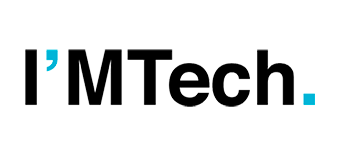“Over fifteen years ago, I was working on the emergence of green IT”, remembers François Deltour, Information Systems Management researcher at IMT Atlantique. “Back then, we realized that green IT was a versatile concept that didn’t have the same meaning for everyone.” And today? There’s not much improvement in that respect. In light of constant technological progress, digital solutions are systematically put forward, and their negative impacts, particularly environmental, are still rarely taken into consideration.
Virginie Lethiais, researcher in Economics at IMT Atlantique, looked into the impact of digital practices in education, as head of an engineering course that covers digital transformation and the societal and environmental transition. “Until a few years ago, we still weren’t teaching anything on the topic. That’s why I began looking into incorporating it to my program, and this initial educational goal gradually became a research project.”
The two experts, who had already been collaborating for a number of years on the connection between innovation and digital technology, naturally converged towards sustainable digital technology. For two years now, they have been assessing the efforts made by companies in making their digital practices more environmentally friendly.
An observatory devoted to digital practices in Brittany
As part of their research, the duo uses both qualitative (in-depth interviews) and quantitative methods, namely the results of the OMNI observatory of the MARSOUIN research group [see text below]. More specifically, the goal of the OMNI survey is to draw up an inventory of the digital technology equipment and uses in establishments in Brittany.
All establishments registered with Brittany’s Chamber of Commerce and Industry were assessed, representing close to 11,500 sites. We speak of establishments rather than companies because they are individual production units, and some of them might belong to the same company. According to INSEE, establishment level is the most appropriate when considering a geographical approach to the economy, and constitutes a more stable population over time. The 2023 results correspond to information collected from a representative sample of close to 1,000 establishments, chosen for their geographical location, activity or size, and all a part of Brittany’s economic fabric.
The OMNI survey is conducted every two to three years and the results are compiled in a vast database so that the evolution of digital practices can be monitored over time. From time to time, specific research questions are added to the survey. “We were therefore able to add a series of questions on the establishments’ sustainable digital practices to the 2021 and 2023 surveys, as well as a section to ascertain the level of knowledge on the impact that digital technology has on the environment”, says François Deltour. “In doing so, we have been able to find out more about how companies operate, especially how they take environmental issues into consideration in their digital strategy”, adds Virginie Lethiais.
Sustainable practices with varying degrees of commitment
Using the data collected, François Deltour and Virginie Lethiais developed a typology of the companies interviewed, focusing in particular on the rate at which six sustainable digital practices are implemented. The establishments were then sorted into three groups: the ‘non energy-sufficient’, who adopt none of these practices, the ‘committed’ who apply some of them and accounted for the majority of interviewees, and the ‘highly committed’ who adhere to these practices on a more systematic basis.
The most common of these sustainable practices was putting electronic devices in standby mode or switching them off, adopted by 77% of the establishments. Next in line was limiting the frequency of equipment renewal (69% of respondents) then reducing the volume of stored data and providing good practice guides. “Between 2021 and 2023, we observed a significant increase in some of these practices, which can be partly explained by the energy crisis provoked by the war in Ukraine”, adds François Deltour. These issues drove companies to adopt measures that as well as being economical, also contributed to reducing their digital footprint.
The last two practices – the use of reconditioned equipment and the purchase of items with an eco-label – distinguish the ‘highly committed’ from the ‘committed’ establishments.
Knowledge of digital impacts – a driver for company commitment
These three groups are fairly similar in terms of the general features of each establishment: line of business, number of employees, member of a group, etc. “However, we have observed that the level of interviewees’ knowledge of the impacts of digital technology influences their actions, even if the correlation is not perfect”, specifies Virginie Lethiais. Respondents – sometimes represented by groups of people, from management to IT systems or HR – were questioned on their level of knowledge of four markers: the National Low-Carbon Strategy, the work carried out by the Shift Project, the REEN law which aims to reduce the environmental footprint of digital technology and the French Institute for Sustainable IT (INR).
This classification also demonstrates that the adoption of sustainable practices is related to the level of digitalization in companies. Establishments with a high level of digitalization, with high digital equipment scores (calculated based on the total equipment used such as mailing lists, job-specific software programs or videoconferencing systems) and in-house IT skills, were mainly put into the ‘committed’ categories. Likewise, there was a direct correlation between commitment to sustainable digital technology and the implementation of a Corporate Social Responsibility (CSR) policy, with most of the establishments with the highest CSR scores in the ‘highly committed’ category.
Spreading good digital practices
Communication plays a key role in making environmentally responsible practices more widespread. All the results from the OMNI surveys can be consulted on the MARSOUIN website, as well as analyses of the results in four-page summaries. “Local authorities and policymakers don’t read academic articles, which is why it is important to provide short summaries that highlight the main findings”, explains Virginie Lethiais. These findings are also presented at the MARSOUIN seminars, where the academic community and local councilors can come together and discuss possible actions to address the environmental impact of digital technology in Brittany.
It is crucial to raise awareness among local councilors and players to include good digital practices in public policy. “Local authorities need to set an example by adopting sustainable digital practices themselves and encouraging companies in their local areas to follow suit”, concludes François Deltour.
For the two scientists, the next step will be to add a more extensive qualitative analysis to this quantitative work, to gain a better understanding of what motivates companies, and to explore the impact of the law and Digital Services Companies (ESN in French) in promoting sustainable practices.





